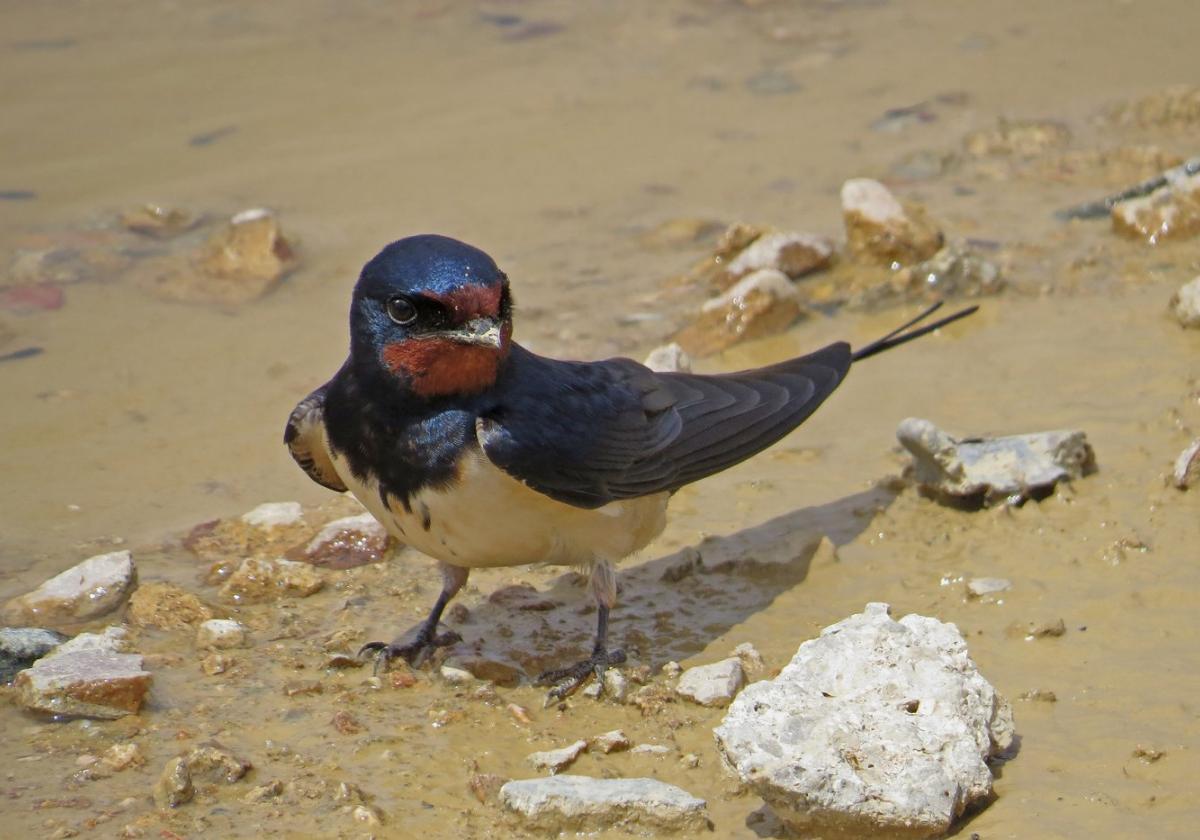
The barn swallow
The Andalucía Bird Society recommends looking out for Hirundo rustica this month
Peter Jones
Friday, 21 March 2025, 11:26
Sections
Highlight

Peter Jones
Friday, 21 March 2025, 11:26
For those of us with roots in northern Europe, the swallow has always been the harbinger of spring. The arrival of swallows here, as early as January in some areas, is always a cause for celebration.
Although there are areas where these cheerful birds spend winter in our region, the largest number migrate as far as the furthestmost point of South Africa.
It is a remarkable feat in the world of bird migration and made even more remarkable by the fact that these birds return to the same wintering and breeding grounds each year: that's better navigation than anything we possess including Nasa.
The barn swallow (Hirundo rustica) is the most widespread species of swallow in the world. They are one of six subspecies that breed across the Northern Hemisphere. As the name implies, they are associated with nesting in man-made structures and have strong connections with man, living in proximity, and are welcomed for their insect eating habits.
Normally the males return first and will choose the nest site to advertise to the later arriving females. Birds will pair for life, the same pair reuniting after their long and separate spring migration.
Although a gregarious species, on migration and in their wintering quarters, swallows become highly territorial once they return to their breeding sites. Both sexes will defend their nest from intruding birds, though the male is more active in this regard.
Despite pairing for life, mating with other males/females is common and yet they remain socially monogamous. It is interesting and amusing that breeding pairs will use deceptive alarm calls to disrupt these sexual encounters.
Swallows can arrive back to their territories as early as February, but in most cases, birds are paired in March. Nesting will begin in March and April.
Provided the old nest is still intact, this will be refurbished and the first clutch of between three and five eggs will be brooded exclusively by the female. Second broods are normal, but usually only two to three eggs are produced.
Breeding birds can start to depart as early as August, but most will join northern birds in large migrating flocks during September and even in October.
Unsurprisingly, given their close association with man, barn swallows are ingrained in our culture and have a long history in literature going back as far as Aristotle's much used proverb from his Nicomachean Ethics "one swallow does not a spring make, nor one fine day", a proverb that is still, in one form or another, in common use to this day.
And there are many superstitions surrounding the nests of swallows. Many refer to avoiding damaging them as it can lead to cows producing tainted milk or no milk at all. Also, damaging a nest is said to lead to hens ceasing to lay eggs and generally bring bad luck.
These and other superstitions might explain why some nests exist for many years, 10 to 12 years is common, but one nest is reported to have been used for 48 years, of course in all these cases the nests have been refurbished each year.
Publicidad
Publicidad
Publicidad
Publicidad
Esta funcionalidad es exclusiva para registrados.
Reporta un error en esta noticia

Debido a un error no hemos podido dar de alta tu suscripción.
Por favor, ponte en contacto con Atención al Cliente.

¡Bienvenido a SURINENGLISH!

Tu suscripción con Google se ha realizado correctamente, pero ya tenías otra suscripción activa en SURINENGLISH.
Déjanos tus datos y nos pondremos en contacto contigo para analizar tu caso

¡Tu suscripción con Google se ha realizado correctamente!
La compra se ha asociado al siguiente email
Comentar es una ventaja exclusiva para registrados
¿Ya eres registrado?
Inicia sesiónNecesitas ser suscriptor para poder votar.